Auf meinen ersten Beitrag über Clean Eating für Hunde hab ich sehr gemischte Reaktionen erhalten. Viele haben mich gefragt, wie ich denn weiß das das alles richtig ist und gut für meinen Hund. Darauf kann ich nur antworten das ich natürlich nicht weiß ob es die perfekte Ernährungsform für Hunde ist und ob Mini in der Natur etwas anderes essen würde. Ich kann nur beobachten wie es meinem Hund geht, ob das Fell glänzt und weich ist, ob die Augen schön klar sind, wie der Stuhl beschaffen ist, ob sie agil und lebensfreudig ist, ob sie sich häufig kratzt (könnte auf eine Allergie hindeuten) etc. Außerdem gibt es ja Bluttests beim Tierarzt, so kann man (genau wie beim Menschen auch) gegebenenfalls Mangelerscheinungen aufdecken und etwas an der Ernährung anpassen (mussten wir bisher nicht, passt alles!). Und ich fühle mich mit dieser Ernährungsform einfach wohler als mit Dosen- oder Trockennahrung, da gibt es für mich einfach viel viel mehr Argumente dagegen. Aber natürlich kann das jeder Tierbesitzer für sich selbst entscheiden, genau wie er selbst entscheidet was er selbst isst und was nicht, ich glaube da gibt es wie beim Menschen keine eine richtige Lösung, sondern mehrere.
I got mixed emotions on my post about Clean Eating for dogs. Lots of you asked how I know that this is the right form of nutrition for my dog. I can only say that I don’t know if its the perfect solution and if Mini would eat differently in the wild. I can only monitor my dog, how she is, if her fur is soft and shiny, if her eyes are clear, how her poop is, if she is agile and vital, if she scratches often (could be a sign for an allergy) etc. Additionally there are blood tests from the vet, so you can point out deficiencies and adapt her food (we didn’t have to yet, everything ok!). I just feel better feeding her this way instead of industrial dog food, there are just too many reasons against it. But of course every pet owner can decide for himself what to feed, just as he can decide what to eat himself, I don’t think there is the one right solution for everyone (like with peoples nutrition).
So, nun kommen wir aber zum eigentlichen Thema für heute: wie genau sich eine Mahlzeit bei uns zusammen setzt und wieviel uns Barfen wirklich kostet!
Lets talk about the main topic for today: how a basic meal for Mini is put together and what Barfing really costs us!
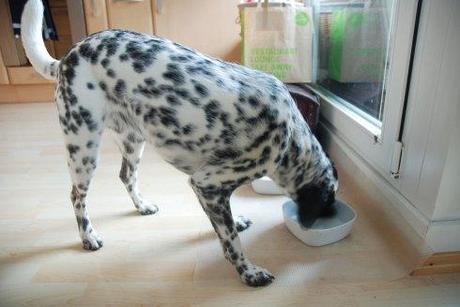
Was gehört in den Futternapf? / What should go in the feeding dish?
- Fleisch / Meat
(liefert Proteine, Fette, Mineralstoffe, Wasser, Vitamine und Enzyme)
(provides protein, fat, minerals, water, vitamins and enzymes) - Gemüse und Obst / Veggies and Fruit
(liefern Kohlenhydrate, Mineralstoffe, Wasser, Vitamine, Enzyme und Ballaststoffe)
(provides carbs, minerals, water, vitamins, enzymes and fiber) - Innereien / Bowels
(liefern Proteine, Wasser, Vitamine und Enzyme)
(provides protein, water, vitamins and enzymes) - Öle / Oil
(liefern Fette und Vitamine)
(provides fat and vitamins)
Ein Beutetier in der freien Wildbahn besteht aus ca. 65% Wasser, 15% Proteinen, 15% Fetten und 5 % Mineralstoffen. Im Detail Muskelfleisch, Knochen, Fett, Haut, Blut und Innereien.
A prey animal in the wild consists of about 65% water, 15% protein, 15% fat and 5% minerals. In detail its muscle, bones, fat, skin, blood and bowels.
Man kann ganz unterschiedliche Fleischsorten füttern, je nachdem auch was der Hund gut verträgt, Geflügel, Lamm, Kaninchen, Kopffleisch/Lefzen, Pangasius, Rindfleisch, Pferd, Strauß… einzig auf Schwein sollte man verzichten, da dieses einen für den Hund gefährlichen Virus enthalten kann (Aujeszky-Virus). Bei aufgetautem Fleisch sollte man die Abtropfflüßigkeit immer mit füttern, diese enthält Eisen und nahezu alle Vitamine und Natrium.
You can feed different meat types, depending on what the dog likes and tolerates, poultry, lamb, rabbit, head meat/flews, catfish, beef, horse, ostrich… only pig should be avoided, as it could contain a dangerous virus (Aujeszky-virus). When feeding thawed meat you should also feed the dripped off liquid, as it contains lots of iron and nearly all vitamins and sodium.
Beim Obst und Gemüse muss man ein bisschen aufpassen, es gibt Dinge die Hunde nicht so gut vertragen, wie zum Beispiel Avocados (können angeblich sogar tödlich sein), Melanzani, Paradeiser und Weintrauben.
With fruits and veggies you have to be careful too, there are some things dogs don’t tolerate that well, for example avocado (can be deadly), eggplants, tomatoes and grapes.
Außerdem geben wir Mini noch ca. 1 Ei pro Woche, allerdings hier nur Schale und Dotter. Im Eiklar sind Substanzen enthalten die Mangelerscheinungen hervorrufen können. Der Dotter hilft aber u.a. dabei das Fell ganz weich und glänzend zu machen, bei Mini funktioniert das echt super (liegt teilweise auch am Öl das mit gefüttert wird)! Und die Schale enthält viel Calcium.
We feed Mini about one egg a week, but only the shell and the yolk. Egg whites contain substances which promote deficiencies. The yolk helps to make the fur soft and shiny, it really works with Mini (I think its also from the oil we are adding). The shell contains lots of calcium.
Getreide und Milchprodukte kann man mitfüttern, sind aber nicht unbedingt notwendig und es kommt auch auf den jeweiligen Hund an, ob sie vertragen werden oder nicht.
Ich seh schon, ich könnte hier Romane schreiben. Am Ende des Artikels werde ich noch Link- und Buchtipps zusammen schreiben, also wer sich für das Thema interessiert findet dort auf jeden Fall noch viele Details.
You can also feed grains and milk products, but its no necessity and depends on the dog.
I could write a book about this topic, I’ll include some links and book tipps at the end of the article, so if you are interested in the topic you can find a lot more details there.
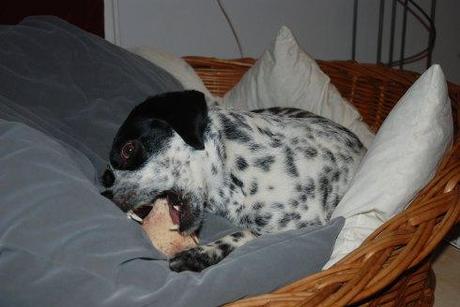
Wieviel braucht mein Hund? / How much does my dog need?
Genau wie wir Menschen haben auch Hunde einen individuellen Bedarf. Ein Durchschnittshund benötigt bei normaler körperlicher Betätigung ca. 2,5% seines Körpergewichtes an Nahrung pro Tag. Bei einem 10kg Hund (Mini hat 12, ich runde das hier der Einfachheit halber für die Berechnungen einfach ab) sind das 250g Nahrung pro Tag. Und das setzt sich wie folgt zusammen:
Dogs have very individual needs, just like us humans. An average dog needs about 2,5% of his bodyweight food a day, when moving normally. For a 10kg dog (Mini has 12, I just make it round here for easier calculations) this is 250g of food a day. And this should be made up of:
- 73% Fleisch (also fürs Bsp. ca. 180g) / 73% meat (for the example 180g)
- 24% Gemüse und Obst (60g) / 24% veggies and fruit (60g)
- 3% Innereien (10g) / 3% bowels (10g)
- ein Schluck Öl / a dash oil
Wir füttern jetzt ehrlich gesagt nicht jeden Tag komplett nach diesem Muster, die Innereien kommen mal dazu, mal nicht. Ich persönlich denke es kommt aufs große Ganze an, und nicht auf eine individuelle Mahlzeit (es gibt aber auch Barfer die ihren Hund komplett nach Ernährungsplan füttern, auch das ist natürlich ok)
We don’t feed exactly according to this scheme every day, the bowels sometimes come to play and sometimes not. I personally think that the big picture is more important than one individual meal (but there are also Barfer who feed according to a nutrition plan, which is ok too)
Was kostet uns das Barfen? / What does Barfing cost us?
Wir kaufen das meiste Fleisch bei Loys in Wien oder beim Fleischer ums Eck. Auch die Knochen gibts von dort, und teilweise sogar das Gemüse (das gibt es in getrockneter Form, weicht man vor dem Füttern ein – Tiefkühlgemüse geht aber auch). Bei den Ölen wechseln wir ab, damit sie nicht immer nur eine Pflanzenöle bekommt sondern von allem etwas.
We buy most of the meat at Loys in Vienna or at the butcher around the corner. Bones are also from there, and sometimes veggies too (they come in dried form, you just let them soak before feeding – frozen veggies are great too). We change the oils frequently, so that she doesn’t get only vegetable oils, but also others.
Rohfleisch und Innereien kosten je nach Sorte zwischen 2 und 5 Euro pro Kilo (Wild und Pferd sind teurer, Rind und Geflügel billiger, eigentlich wie beim Menschen), ich habe hier mit einem Durchschnittspreis von 3,5 Euro gerechnet. Innereien sind meist etwas billiger, hier habe ich mit 2 Euro gerechnet. Und beim Gemüse wird es schwierig, vom Trockengemüse kann man das Gewicht nicht eins zu eins nehmen (hier kosten 500g rund 5 EUR und man kommt damit aber lange aus, ich schätze rund 2 Monate). Hier habe ich 5 EUR eingerechnet und so teilweise Trockengemüse, teilweise Tiefkühl- und teilweise Frischgemüse eingerechnet. Und beim Öl kommt es sehr auf die Qualität des Öls an das man verwendet, es gibt natürlich ganz billige Öle im Supermarkt, oder die teuren aus dem Bioladen. Wir wechseln hier wie gesagt ab und ich habe mit einem Durchschnittspreis von EUR 5 im Monat gerechnet (wir verbrauchen max. 1 Flasche im Monat für Mini, manchmal ist das billiges Öl um 2 EUR, manchmal teures um 10 EUR).
Raw meat and bowels cost between 2 and 5 Euro per kilogram, depending on the kind (venison and horse are more expensive, beef and poultry is cheaper, like for humans). I calculated with an average price of 3,5 Euro. Bowels are usually cheaper, I calculated with 2 Euro. And veggies are kind of difficult, you can’t take the weight of the dried veggies for fresh ones (500g cost about 5 EUR and they last long, I think about 2 months). I calculated with 5 EUR, so I took into account some dried, some fresh and some frozen. For the oil it depends on the quality of the oil, there are really cheap ones from the supermarket and really expensive ones. We change it up a bit and I calculated with an average price of 5 EUR a month (we need 1 bottle a month – maximum – sometimes its cheaper oil for 2 EUR, sometimes its more expensive for 10 EUR.)
Pro Monat (mit 30 Tagen) kommt man so bei einem 10kg Hund auf ca. 30 Euro. Im Detail:
Per month (with 30 days) I calculated about 30 Euro for a 10kg dog. In detail:
- 180g x 30 Tage = 5,4kg Fleisch > x 3,5 EUR = 18,9 EUR
180g x 30 days = 5,4kg meat > x 3,5 EUR = 18,9 EUR - 60g x 30 Tage = 1,8kg Gemüse > = 5 EUR
60g x 30 days = 1,8kg veggies > = 5 EUR - 10g x 30 Tage = 300g Innereien > = max. 2 EUR
10g x 30 days = 300g bowels > = max. 2 EUR - Öl = 5 EUR
Oil = 5 EUR
Dazu kommen noch Leckerli (die füttern wir je nach aktuellem Gewicht von Mini zusätzlich, oder wir füttern dafür weniger Fleisch) wie Ochsenziemer, Schweinsohren etc. und der gelegentliche Knochen um die Zähne schön sauber zu halten (beim Fleischer kostet ein Markknochen ca. 1,5 EUR).
To this you have to add treats (depending on Minis current weight we add them to her normal food or just feed less meat), like bull’s pizzle, pig’s ears and some bones to keep her teeth healthy (they cost about 1,5 EUR at the butcher)
Wenn ich dagegen jetzt Dosenfutter her nehme, bei dem ich je nach Sorte ungefähr eine 800g Dose pro Tag für meinen 10kg Hund benötige, die (wieder je nach Sorte, ich habe hier eine bekannte Marke genommen) pro Dose ca. 2 Euro kostet, bin ich im Monat damit bei 60 Euro – also doppelt so viel! Und hier habe ich noch keine Leckerli eingerechnet. (Natürlich gibt es auch billigeres Futter, aber selbst damit ist man in der Nähe der Kosten fürs Barfen). Wenn man jetzt glaubt, seinem Hund etwas Gutes zu tun, und das tolle Futter beim Tierarzt kauft, ist man meist noch teurer dran. Ihr seht also, Barfen ist auf keinen Fall teurer als andere Fütterungsmethoden.
When I take industrial food, where I need about 1 800g tin per day for my 10kg dog (depending on the kind, I used a popular one for calculations), and each tin costs about 2 EUR, I’m at 60 EUR for a month – that’s double the price of Barfing!! And I also didn’t include treats. (Of course there is cheaper food available, but still, you only come to about the same price as Barfing). When you think you are doing your dog a favor and buy only food from the vet, thats even more expensive. You see, Barfing is less expensive than you’d think!!
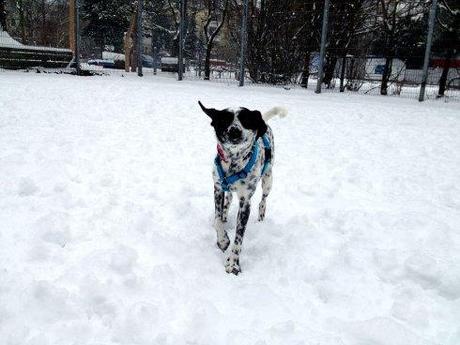
Links
Hier noch wie versprochen die Links und Buchtipps wo ich auch die meisten Dinge die gelernt habe:
As promised some of the links and books from which I learned most of the things:
http://www.barf-fuer-hunde.de/
http://www.barfinfo.de/
“BARF ist immer noch das beste Rezept” von Eva Böhm
Wir sind wie gesagt begeistert, alle die Mini kennen wissen wie agil und glücklich sie wirkt, also für uns ist Barfen einfach das Richtige! Und nicht nur Mini schmeckts, auch Balu probiert ab und zu etwas von ihrem Fleisch (er ist nur zu alt um ihn noch umzustellen, hätte ich probiert, aber ihr wisst ja vielleicht wie pingelig Katzen sind ;-) )
We are crazy about it and everyone who know Mini knows how healthy and happy she seems to be, so for us Barfing is the right choice!! And not only Mini likes it, sometimes Balu takes a bite too (he is just too old to change him over too, I tried it, but you know how picky cats can be ;-) )
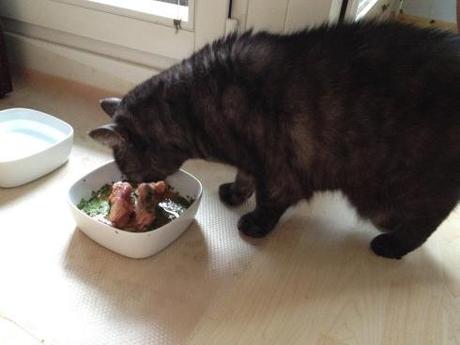

Link des Tages / Link of the day
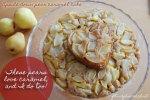
Verkehrter Birnen-Karamell-Kuchen / Upside down pear-caramel-cake


